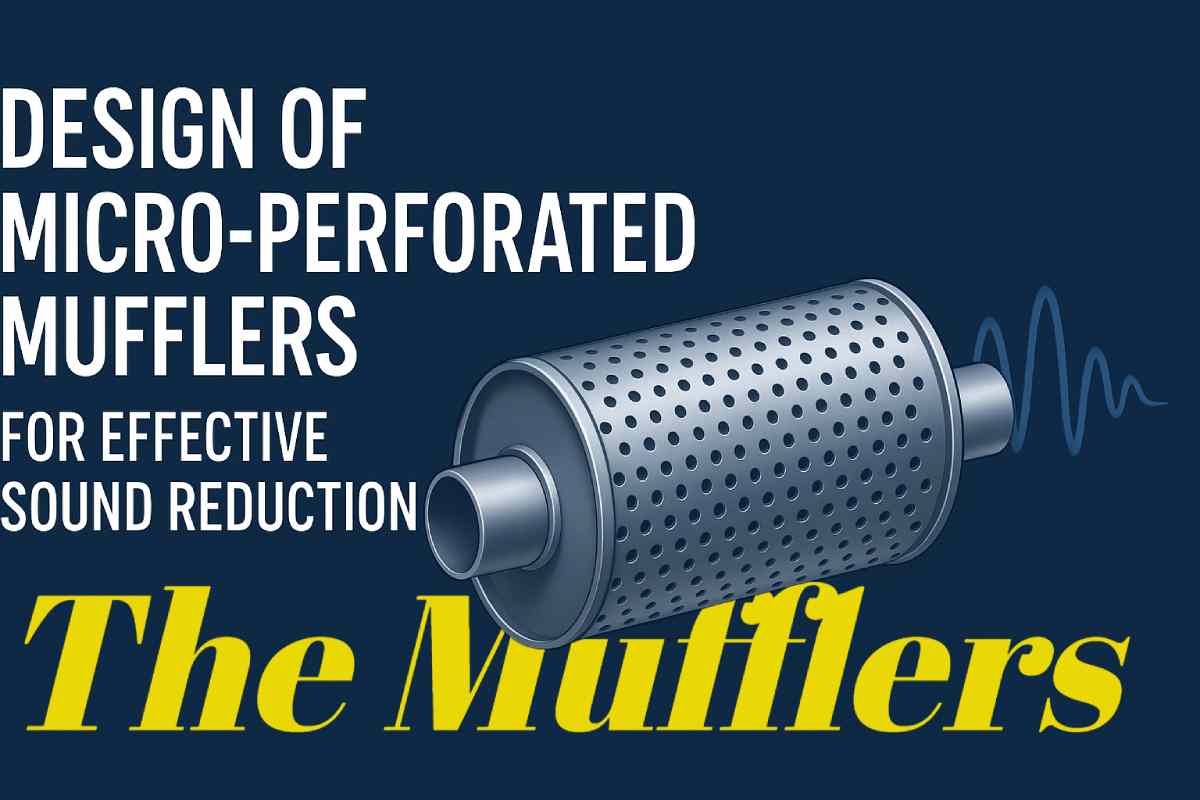- Posted on
- • Performance
Designing Micro-Perforated Mufflers for Noise Control
- Author
-
-

- User
- Torque
- Posts by this author
- Posts by this author
-

Design of Micro-Perforated Mufflers for Sound Reduction
Noise control in engineering isn’t just about making things quieter — it’s about doing it in a way that lasts, fits the space, and doesn’t kill performance. One solution that’s been gaining serious attention is the micro-perforated muffler.
If you’ve only dealt with the usual wool-stuffed or foam-lined silencers, this design takes a completely different approach.
What’s a micro-perforated muffler, anyway?
Think of a regular muffler, but strip away the fluff — literally. No wool, no foam, no fibrous packing to burn out or clog over time. Instead, you’ve got a solid metal plate or tube peppered with hundreds, sometimes thousands, of tiny holes. We’re talking really tiny here — 0.3 to 0.5 mm is common. You probably wouldn’t even notice them without leaning in for a close look.
When sound waves rush into it, those holes force the air to rub against the metal edges. That rubbing — engineers call it viscous friction — steals a bit of energy from the sound and turns it into heat (not enough to warm your hands, don’t worry). Behind that perforated surface sits a hollow cavity. It’s not empty for no reason — it’s tuned to knock down specific frequencies, sort of like the way a guitar body shapes the sound of its strings.
Why bother with micro-perforated designs?
They’ve got a bunch of advantages over traditional mufflers:
- Durability. No fibrous materials to burn, crumble, or blow out.
- Cleaner operation. Dust, moisture, and oil have a harder time messing them up.
- Consistent performance. They sound-damp just as well in year five as they did on day one.
- High-temperature tolerance. Perfect for exhaust systems or machinery that runs hot.
If you’re in marine, industrial, or even automotive applications where longevity matters, these are worth a look.
Key design factors you actually need to think about
Hole size.
Smaller holes — under half a millimetre — are great at killing high-frequency tones, but they’re harder to make and can clog in dirty environments.
Open area (porosity).
This is simply how much of the surface is “hole” instead of metal. A range of 1% to 15% is common. More open area means easier airflow but less friction for the sound to fight through.
Plate thickness.
A thicker plate gives each hole a longer tunnel. That changes how much noise turns to heat. Most designs end up around 0.5–2 mm thick — thinner risks bending, thicker adds weight and cost.
Cavity depth.
That air space behind the plate tunes the muffler. Shallow cavities knock down high-pitch sounds; deeper ones go after the low rumbles.
Multiple chambers or baffles.
Sending the sound through several stages broadens the muffler’s “kill zone” across frequencies. The trade-off? More size and more pressure drop.
In short: sound slams into the surface, squeezes through the holes, loses energy, and comes out quieter. The cavity and chamber layout decide which pitches get hit the hardest.
Getting started with the design — the stuff you decide first
Figure out what kind of noise you’re actually fighting. Is it a deep-throated diesel generator hum? Or a sharp compressor hiss? The answer will steer every design choice.
Play with hole size and porosity. A good starting point is holes around 0.5 mm with 3–8% open area. That’s not a magic number — it’s just where testing often begins. More open area lowers back-pressure but might let sound slip through; less open area boosts damping but can choke airflow.
Pick plate thickness with strength and tooling in mind. You might be laser-cutting, micro-drilling, or chemically etching. Each has limits, and the wrong thickness can warp, crack, or inflate production costs.
From there, you move into prototyping — because with mufflers, a small tweak can turn “meh” results into something you can actually brag about.
Where you’ll see micro-perforated mufflers in the wild
- Automotive exhaust systems – Quieter rides without gutting performance.
- HVAC ducts – Taming fan and airflow noise in buildings.
- Industrial machinery – Compressors, pumps, generators.
- Marine engines – Survive humidity and salt without clogging up.
Pitfalls to watch out for
- Too much porosity = less sound control.
- Too little porosity = excessive back-pressure.
- Manufacturing tolerance is critical — hole size consistency really matters.
- Costs can climb for high-precision drilling or etching over large surfaces.
Final thoughts
You could walk past a micro-perforated muffler and not give it a second glance. It’s just a tube or plate, speckled with tiny holes — nothing flashy. But behind that plain look is a lot of quiet engineering. The size of each hole, the thickness of the plate, the depth of the cavity… all of it works together in a kind of silent choreography to tame sound without stuffing or foam.
When you get that balance between airflow and resistance just right, you’ve got something that will keep doing its job for years — no matter the heat, moisture, or vibration you throw at it. They’re not the cheapest option to build, and they were never meant to be. They’re built for the times when reliability matters more than shaving a few dollars off the budget. And the funny thing? When they’re working perfectly, you almost forget they’re there at all.
